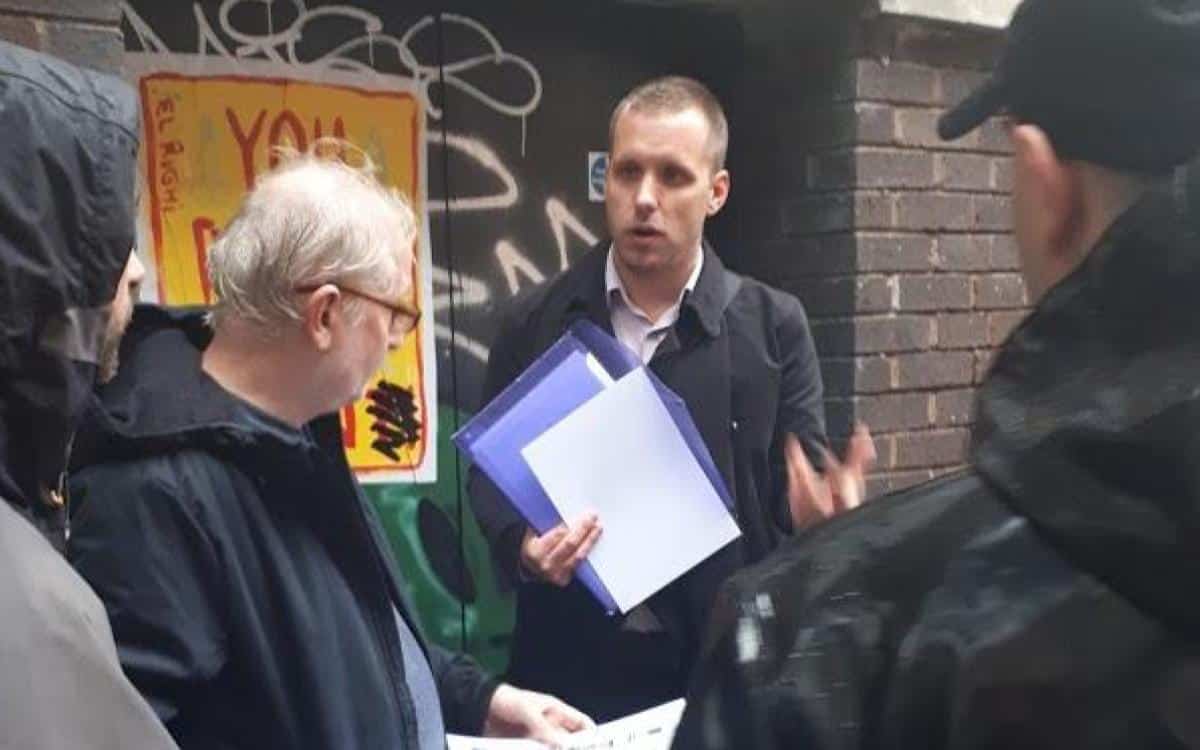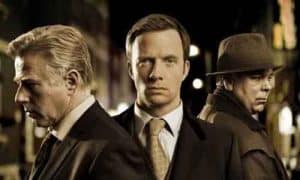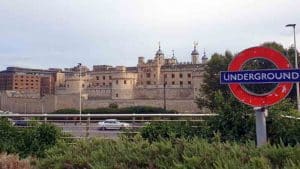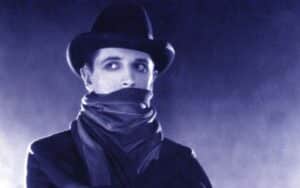Ripperologist TREVOR BOND, of Chronicles Tours, reveals what it’s like to be a professional Jack the Ripper tour guide in London’s East End
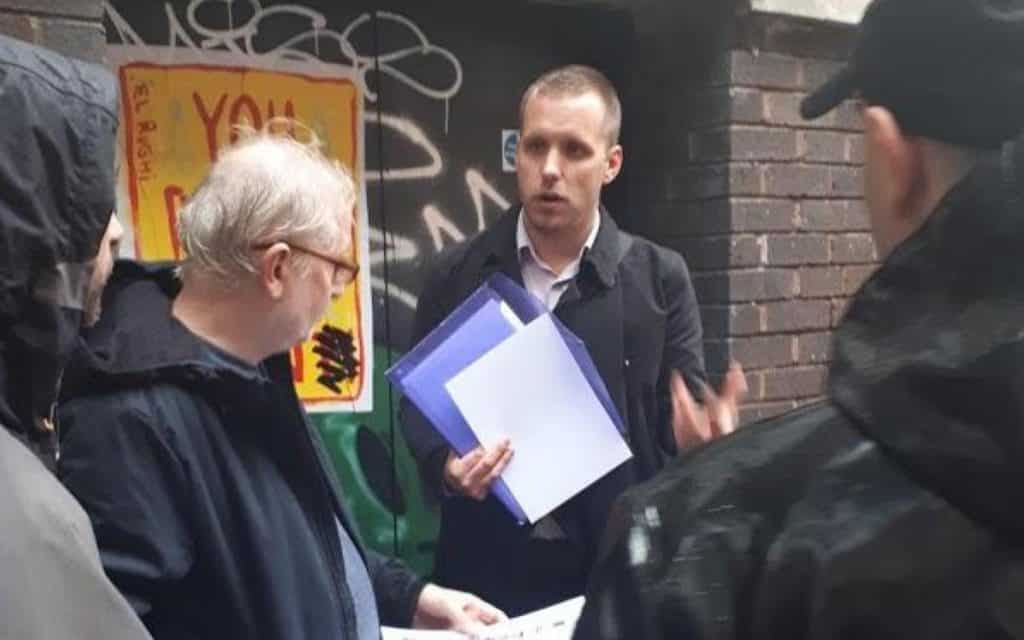
“Please allow me to introduce myself…”
For around two years from summer 2016 to the winter of 2018, I guided ‘Jack the Ripper’ tours around the East End (and a small portion of the City) of London, before launching my own tour company focusing on wider aspects of the capital’s history.
It was, on the whole, an enjoyable experience, and certainly gave me a solid grounding in the mechanics of guiding. Having given case-related talks at conferences since 2010, I was well-versed in the story, and leading large groups of up to 40 people a night was good for the ego, if not necessarily always for negotiating the streets of Whitechapel and beyond – streets that were often crowded with locals, visitors, and rival tour groups.
This year it will be two years since I last led people around the streets of ‘Ripperland’ (although one of my current tours briefly visits the area, often giving rise to a nostalgic smile). Many others, including some of my former colleagues, have done so for significantly longer, and continue to do so. Nevertheless, and for what it is worth, here are my thoughts on and what I learned from my time in ‘the abyss’ – my ‘Confessions of a Ripper Guide’.
The Streets They Are a-Changin’
Even in the time I was guiding around them, the streets on which the murders occurred were changing, as indeed they have apace since 1888 itself.
Mitre Square, site of the murder of Catherine Eddowes, already bore little resemblance to its Victorian form but nevertheless for years had maintained an eerie, claustrophobic feel.
Similarly, Dorset Street, once home to the room rented by victim Mary Kelly, had changed shape and name (first to Duval Street, before becoming an unnamed service road beside Old Spitalfields Market) but for many years remained a popular stop on tours as it could still be accessed, with a set of steps close to the site of Kelly’s former home offering a prime oratorical spot.
By 2018, both places had changed greatly. Development in Mitre Square gave it a more open, somewhat anonymous, look, whilst the former Dorset Street was closed off for some time and eventually demolished entirely before being almost entirely built over.
The scale of redevelopment has only intensified since. Even Gunthorpe Street, the atmospheric starting point for my tour and many others, has recently gained a large new building at its northernmost end – to my taste, one completely out of character with the rest of the street (although it should be acknowledged that very little of the street, site of the death of Martha Tabram, dated from the Victorian era even beforehand).
Apart from a handful of one-off tours for Spooky Isles, I haven’t led a tour of the area since, and were I to restart it is entirely possible that I would have to rethink portions of my previous routes.
Theories Come… and Theories Go
When I began guiding, Russell Edwards’ book ‘Naming Jack the Ripper‘ was two years old. In it, Edwards makes his case for the culpability of Aaron Kosminski (a man suspected of involvement since at least 1894, independent of any items of clothing) on the basis of novel DNA analysis of a disputed shawl claimed to have belonged to victim Catherine Eddowes.
‘The book about the shawl’, as it was often referenced, was still on people’s minds back then, as to a slightly lesser extent was Jeff Mudgett’s assertion in his 2011 book ‘Bloodstains’ that his great-great-grandfather Herman Webster Mudgett (better known by his pseudonym of H. H. Holmes) was ‘Jack’, despite a complete lack of evidence that he was ever in London during the crucial period.
Both of these theories would garner occasional mentions by my groups, although notably more so at the start of my tenure than by the end. Accordingly, I worked mention of them into my ‘script’ (such as I ever had one), but by 2018 they would draw more blank looks than knowing ones. Such is the fate of many proposed solutions to the mysterious ‘autumn of terror’, however widely championed and serialised they may initially be.
It would be interesting to know how much the latest highly publicised ‘Ripper’ (or ‘Ripper’ adjacent) book, Hallie Rubenhold’s ‘The Five: the Untold Lives of the Women Killed by Jack the Ripper’ (published in 2019) has infiltrated into public consciousness, and whether guests are now asking guides about Rubenhold’s assertion that a majority of the victims did not engage in occasional prostitution to support themselves in their hand-to-mouth existence.
For the record, my own position is clear on this – there is more than sufficient evidence to refute this assertion, and although it is a valid point to examine it is hardly a new one, and amongst those who take the effort to check the lives of these women are hardly ‘untold’ and are typically sympathetically dealt with. I find the currently popular assumption that we must first prove that these women were not forced into selling themselves out of desperation before we can empathise with or respect them troubling.
Perhaps it is best that I am no longer in a position to be asked to comment.
Public Interest is Very Different to Private Debate
Despite the speed with which trumpeted theories became old news, there were some representations of the case which I had expected to have left a greater legacy.
Patricia Cornwell’s 2002 book ‘Portrait of a Killer’ (subtitled ‘Jack the Ripper – Case Closed, and framing artist Walter Sickert, again a suspect previously proposed) and the 2001 film ‘From Hell’, starring Johnny Depp (which implicates no lesser a group of conspirators than the British Royal Family), seemed to be news to a large proportion of guests, and soon dropped out of my repertoire.
In both cases, this lack of engagment is perhaps unsurprising given the time which had passed since their release but was surprising to me at least, as they remain works which hardcore ‘Ripperologists’ commonly reference, albeit rarely in a complimentary manner.
But Some Ideas Refuse to Die
Other representations of the case exhibited greater longevity – or, at the very least, one of them. Former journalist Stephen Knight’s 1976 book ‘Jack the Ripper – the Final Solution’ (in large part the inspiration behind both the source graphic novel and film version of ‘From Hell’), in which he implicated the British royal family in a murderous conspiracy which also featured the Freemasons, a coach driver, and – yes – Walter Sickert, will probably still be inspiring questions on tours in another forty-four years.
Knight’s theory has been widely discredited. The catalyst of his ‘solution’ – a woman named Annie Crook, who supposedly conducted an affair and subsequent secret marriage with Queen Victoria’s grandson Prince Albert Victor – survived for thirty-two years after 1888, exhibiting none of the symptoms commensurate with the radical and debilitating brain operation supposedly forcibly performed on her under the orders of Victoria’s personal surgeon Sir William Gull.
The alleged motivation that the daughter born to Crook and the Prince would have presented a threat to the Royals is proved nonsensical by a cursory understanding of the Act of Supremacy. The Crook family’s supposed Catholicism, another alleged source of scandal, is also far from established.
Nevertheless, the idea that at a minimum four of the five victims of ‘Jack’ were friends (the death of Catherine Eddowes, in Knight’s telling, being a case of mistaken identity; the other four being complicit in a blackmail plot against Prince Albert Victor and co.) has proved remarkably resilient.
The Royal Family are not off the hook yet, either, at least so far as some are concerned. I very quickly lost count of the occasions on which an (often lone) attendee would sidle up to me, commonly somewhere between Goulston Street and Mitre Square, and say some variation of ‘of course we all know it was the Royals that did it, don’t we?’.
In Some Ways, Little has Changed
Monetary motivation notwithstanding, one passion which drove me towards ‘Ripper’ tours was a passion for the history of the East End, once home to many generations of my own family. I strongly believe that crime stories can provide a window on people and places of whom we would otherwise know little or nothing at all.
Accordingly, I would utilise ‘Jack’ as a hook on which to hang various elements of social history – the workhouses, one of which provided the petticoat which Mary Ann Nichols was wearing on the night of her death, the overcrowded and unsanitary lodging houses, examples of which ejected both Nichols and Annie Chapman hours before their murders, and the various ways in which what was once an area of open fields descended into a poverty-stricken hellscape which American writer Jack London would later describe as ‘the abyss’.
128 years later it was impossible to ignore modern parallels. Leading a tour starting outside Aldgate East station, talking about overcrowding and state neglect in 1888 felt rather hollow when also having to ensure that guests did not disturb rough sleepers in the entrance to Gunthorpe Street.
The fact that almost 40 percent of families in Tower Hamlets – the borough which now includes many of the crime scenes and related locations from 1888, but also includes the glittering skyscrapers of Canary Wharf’s business district, and located barely a mile from the City itself – are still living in poverty, with the borough also having the highest rate of child poverty in the UK, is a disgrace.
It is often said that were the victims of ‘Jack’ to reappear today then they would struggle to recognise the streets they knew, now replete with high-rise office blocks and multi-million pound residences in Spitalfields. It is, however, also true that they may recognise the plight of far too many of their modern counterparts all too well.
‘Jack’ is Infamous Worldwide
This may seem an obvious statement – but consider another notorious East End story which has not travelled as widely as may be thought. On one of my current tours, I would previously make reference to how the Kray twins once worked at Billingsgate fish market. I soon had to abandon this fact, however, as despite numerous books, TV programmes, and films (not least the 2015 Tom Hardy vehicle ‘Legend’) the name of the twins would be met with questioning faces.
‘Jack the Ripper‘, however, is a phrase that will see ears prick up around the world, even if people know little of the facts (or wonder, for example, why Sherlock Holmes never identified the killer). During my time leading these tours, I welcomed guests from almost every continent on the globe (in fact, all with the exception of Antarctica).
One of my favourite assignments was taking charge of international school groups, and in such cases I would always take time to research a proposed suspect from the relevant country. I would rarely come up empty. Perhaps the most ludicrous was the suspect I discovered for the entertainment of a Belgian group – King Leopold II!
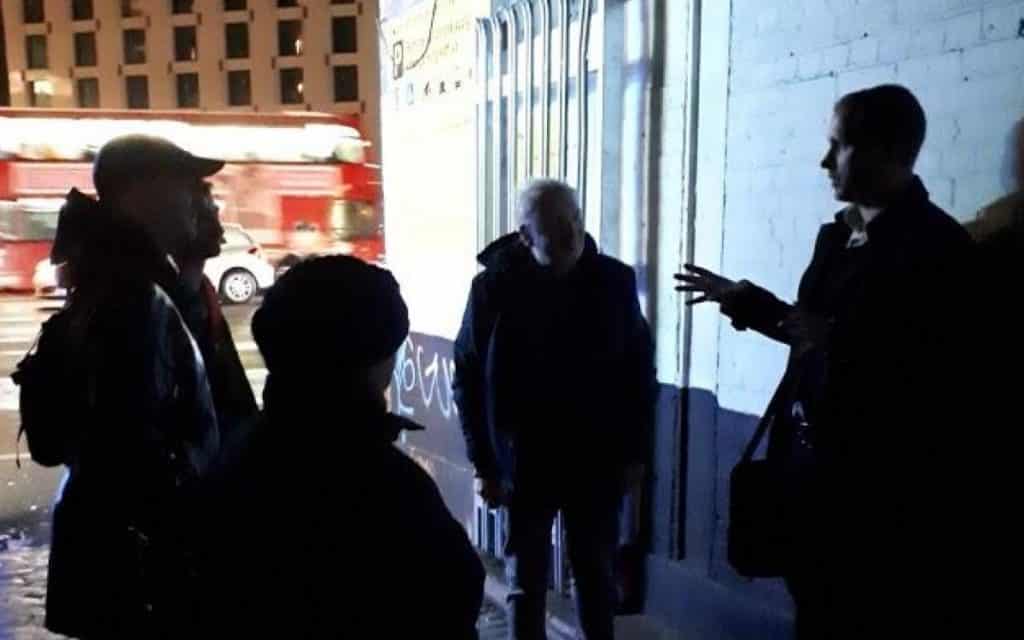
Other Guides are Nice, Mostly
There are now too many companies offering ‘Jack the Ripper’ tours to count – from one-man-bands to a handful of companies capable of attracting the numbers of patrons of my former employer. There is even a Spanish language tour which I saw grow impressively during my time (they render the name as ‘Jack el Destripador’, in case you were wondering, which sounds truly fantastic).
Inevitably, guides become familiar with one another. Whilst camaraderie may be too strong a word, on the whole there was a feeling of respect between most, many of whom could be found on occasion enjoying a post-tour pint either in the White Hart (relevant to the case as the former workplace of suspect Seweryn Klosowski, aka George Chapman) or the Hoop and Grapes (my personal preference). Demand for these tours shows little sign of declining, and so there was rarely a sense of outright competition and I enjoyed more than a few drinks with fellow guides both from my own and other companies.
However, one regrettable occasion comes to mind. I used to explain the death of Elizabeth Stride (the first of two victims on the night of the so-called ‘double event’, murdered too far south for conventional tours to visit the site itself) outside a shop in Wentworth Street, before leading my group around the corner into Goulston Street where I would tell them of the subsequent death of Catherine Eddowes and the concurrent graffiti discovered outside what is now a fish and chip restaurant.
Here, one night, I was spotted by a rival guide who accused me – in front of his and my groups, all of whom appeared mortified and embarrassed – of stealing his ‘spot’ and then of belonging to a company which employed drunks and drug addicts (needless to say, such an allegation was unfounded and untrue).
After my tour finished, I saw this gentleman (who may well have been infuriated by the fact that his own, well publicised, theory was beginning to be forgotten) on the opposite side of the road. As he crossed, I honestly thought that he may want to clear the air. I was wrong. Following a rant about how his answer to the case would put all other guides out of business, I was told that if he saw me again then he would instruct his friends to break my legs.
I made a report to the police, but stopped short of asking them to visit the perpetrator at his home. My intention was simply to have something on record should a further confrontation occur. Thankfully it didn’t, and I never saw the guide in question again. I have doubts whether they are even conducting tours today.
Incidentally, the encounter took place right on the border of the Metropolitan and City police districts – in fact, when I reported it at the City police station in Bishopsgate (on the site of the police station from which Eddowes was released less than an hour before her death) they spent a long time checking maps and deciding whether I should be talking to them or the ‘Met’. I was not so shaken that I could not appreciate the irony of this, given at the time of the incident I had recently been discussing the specifics of how Eddowes may have lived had she been arrested for being drunk and disorderly just a few yards further east and on the other side of the same border.
And on a Lighter Note…
A few short notes on some of the other positive aspects of my ‘Ripper’ career…
We are all guilty of paying too much attention to our mobile devices whilst walking, but the look of shock in the eyes of someone as they belatedly spied a large group coming along the street towards them never failed to amuse me.
The residents of the old almshouses in Puma Court never once shouted at me for using their railings as a dramatic backdrop to my reading of the ‘Dear Boss’ letter, and for that I shall be eternally grateful. I have heard (and do not doubt) stories of locals confronting guides, but I was lucky enough never to experience any major hostility.
Also, the resident cat in Puma Court (I never did discover in which home s/he lived) was always a welcome sight – even if it would have fitted better if they appeared at my next stop, when mentioning the famous Dorset Street cat ‘Diddles’.
On another animal-related note, the Gunthorpe Street rats are fascinating and deserve to be studied. Seriously, those creatures (presumably fuelled by discarded curry and naan bread from nearby Brick Lane) are huge. Unless you have seen them, you have seen nothing like them.
Guests are Just People
A final note, if I may be so bold.
The very existence of Jack the Ripper tours has come under scrutiny recently, particularly around the time that the ‘Jack the Ripper Museum’ opened in 2015 (located far from any relevant sites, and with a number of questionable exhibits both in terms of taste and factual accuracy) and more recently with the publication of Hallie Rubenhold’s aforementioned book.
Whilst such criticism risks ignoring the hold that gruesome tales have had on human imagination since time immemorial (and that ‘Ripper tourism’ began back at the time of the murders themselves, for example with residents of Hanbury Street renting out their windows to people wanting a bird’s eye view of the site of Annie Chapman’s murder) I do believe that this is a worthwhile debate.
Every writer, guide, etc., who is handling this case becomes a better person for examining the motivation for their own interest and questioning the appropriateness of their individual approach.
However, I feel compelled to inject a note of caution. Guests booking on a ‘Ripper’ tour were, in my experience of well over a thousand of them, overwhelmingly sympathetic, sensitive, and perfectly normal – at least as normal as any cross section of the public.
Some had been reading about the case for years and were excited to finally visit the area, but the majority had vaguely heard of the story, perhaps had a penchant for the dark side of history to a greater or lesser extent, and were simply looking for a different London experience for a couple of hours in-between visiting more common tourist attractions and having a nice dinner in Brick Lane or nearby.
To suggest that such people are naive enough to be exploited, or alternatively that they are bloodthirsty, misogynistic, or so on is frankly insulting to a section of the public who provided the greatest joy of my time in and around Whitechapel. I miss them regularly.

